

DID YOU KNOW
Interesting facts to know before visiting Namibia.
Houses the Oldest Desert
Only desert in the world where you can find large mammals like elephants, rhinos, lions and giraffes.
Highest Sand Dunes
Sossusvlei Sand Dunes are some of the highest in the world.
Second largest Canyon
Home to the Fish River Canyon. A vast mountain range eroded down by the ocean.
PLAN YOUR TRIP
Discover the best of namibia., where to stay, what to see, travel info, latest news.
Stay Informed about the latest blog posts and industry news.
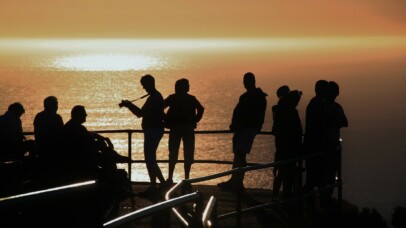
Over 1.6m tourists visited in 2019
The 2019 tourist statistical report shows that the tourism sector was still healthy and showing slight growth. It…
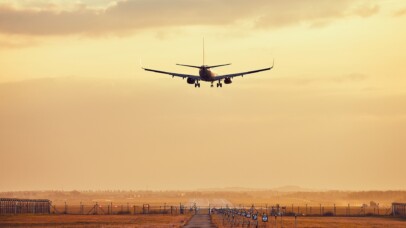
Westair cleared for take-off
WESTAIR Aviation has officially become a scheduled passenger airline in Namibia after it was granted carrier status by…
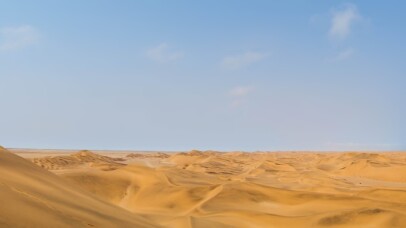
New Gondwana lodge opens in the Namib Desert
Treat yourself to desert elegance and an extra touch of grace! The Gondwana Collection Namibia opened its new…
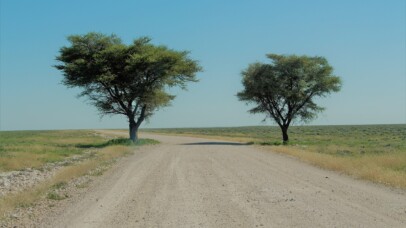
New lodge planned for Iipumbu ya Tshilongo Conservancy
WINDHOEK – The Ministry of Environment and Nuvella Development Marketing Management have signed a 25-year lease contract with…
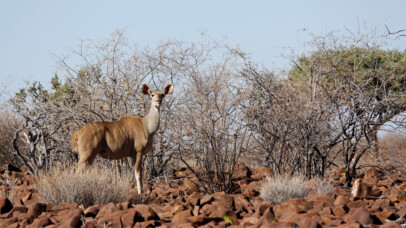
NWR leads Transfrontier Conservation Area product offering
Windhoek, 5 February 2018 – Namibia Wildlife Resorts (NWR) along with the Ministry of Environment & Tourism (MET) and…
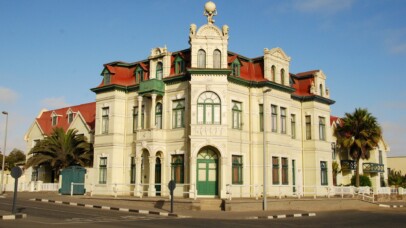
The unforgettable vibe of News Cafe comes to Swakopmund
News Cafe, the iconic, pioneering South African franchise, is set to open a new store in the beautiful…
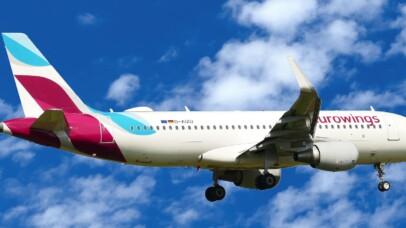
Namibia is a rare gem for tourists
Article by Desie Heita Windhoek – For many European airline and tourism operators Namibia is this rare gem…
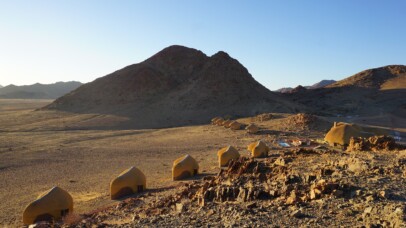
Gondwana lodges receive TripAdvisor awards
Gondwana lodges receive TripAdvisor awards. The Delight Swakopmund, Namib Dune Star Camp, Etosha Safari Camp, Kalahari Farmhouse, and…
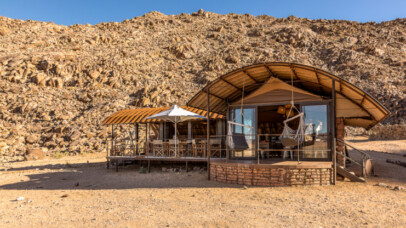
Camp Sossus – Ultimate Safari’s new camp.
Camp Sossus emphasises every aspect of the intention to redefine immersive exploration and luxury. The definition of this…
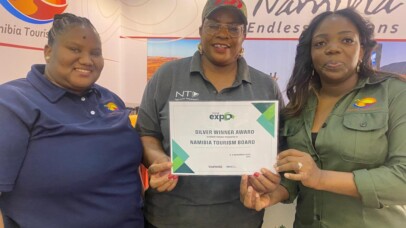
A regulated industry, keeping the standards high as always.
The Namibia Tourism Board (NTB) exhibition at the Namibia Tourism Expo 2022 drawn positive attention to many tourism…
NTB Newsletter
Signup to our newsletter.
This will close in 0 seconds
Privacy Overview

Welcome to the
The platform for responsible travel in namibia, tourism supporting conservation trust.

TOSCO links tourism to positive outcomes for nature through supporting community conservation
Promoting responsible travel the namibian way.

Linking tourism and conservation through

TOSCO (Tourism Supporting Conservation Trust) is the leading organisation in promoting responsible travel in Namibia, by bringing tourism into harmony with nature.
Tourism is one of the fastest-growing industries worldwide and in Namibia. With its wide-open landscapes, free-roaming wildlife and authentic traditional cultures, Namibia will continue to be an inspiration for travellers from all around the world. For tourism to be sustainable, it needs to support the conservation efforts that secure the natural resources that the industry depends on.
TOSCO is an NGO that offers tourism businesses a platform to link travel to positive conservation outcomes, by supporting the communities that look after it. Rural communities have been central to Namibia’s conservation success story, and so the relationship between tourism and nature can only be strengthened and deepened when travel contributes to poverty alleviation and rural economic development. This way, communities can benefit from maintaining a healthy environment.
This is how TOSCO assists tourism businesses in being the responsible agents that travellers are looking for.
Travel responsibly, the Namibian way!
Our vision is for tourism and nature to flourish in harmony. Tourism members go up as natural ecosystems grow more diverse and spectacular, whilst benefiting local communities for the natural resources that they conserve, in a self-sustainable and infinite way.
We promote responsible travel by linking tourism and conservation within three key themes:
TOSCO in numbers
Join the responsible travel movement.
By becoming a TOSCO member you join a growing movement of responsible tourism businesses that together want to ensure a sustainable future for travel in Namibia.
Have you seen our sustainable travel goodies?
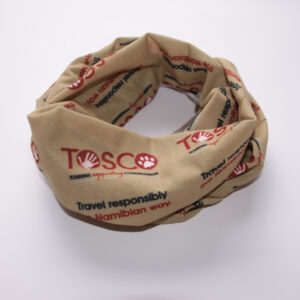
Add to cart
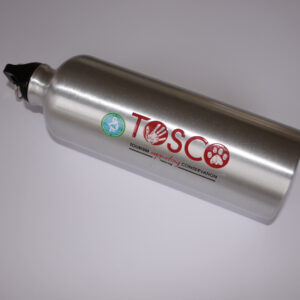
TOSCO Water Bottles
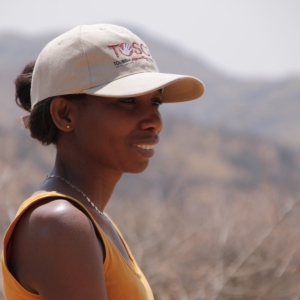
Vanishing Kings – Lions of the Namib Desert Book

Vanishing Kings DVD part, A & B

LATEST NEWS FROM US
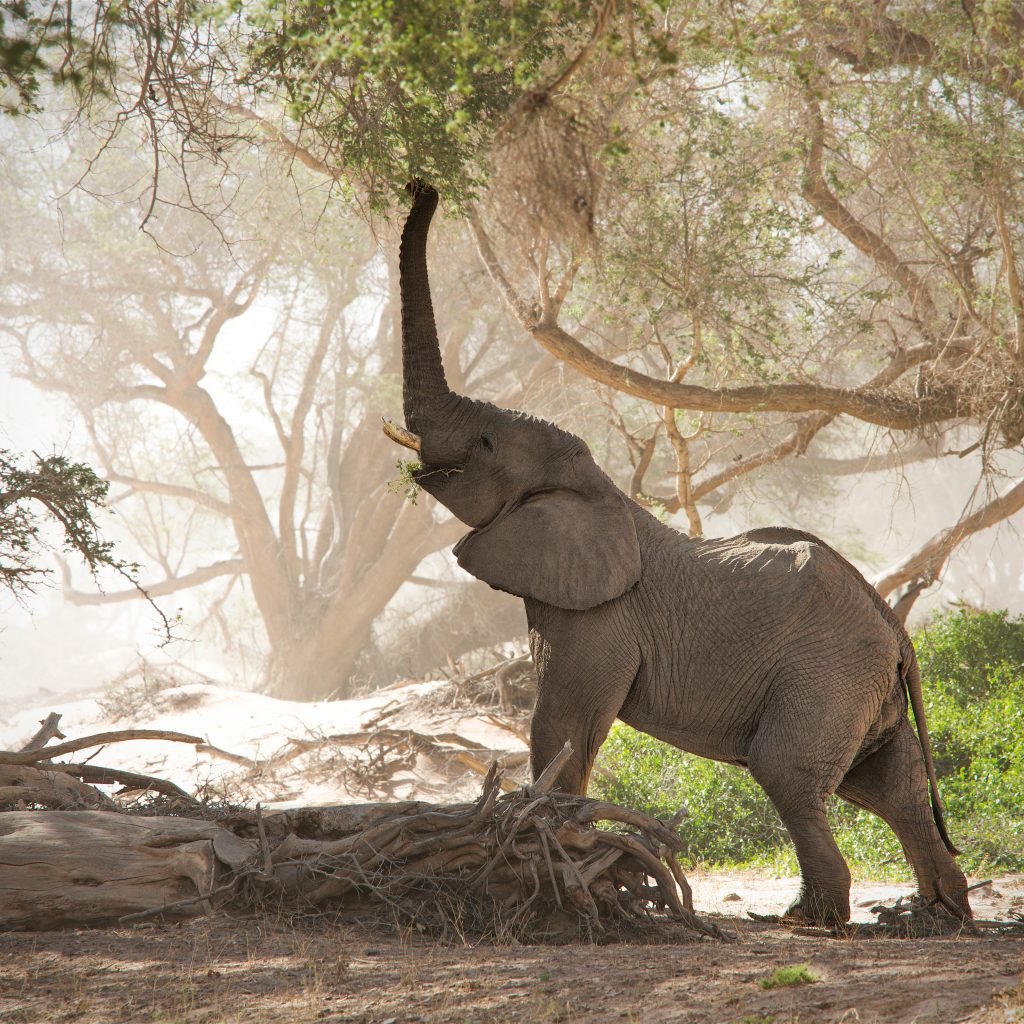
TOSCO celebrates 10 year anniversary
In 2012, tour guide Félix Vallat had a dream. He wanted to strengthen the relationship between the tourism industry, in which he worked, and conservationists and communities who needed more…

TOSCO & NDP working hand in hand
The Namibian Dolphin Project (NDP), A non-profit, research and conservation organization run by several independent scientists and educators, has been working in Walvis Bay and Lüderitz since 2008. Their primary…

Creating awareness to the Namibian youngest audience with cartoons – poaching
TOSCO and PAKO teamed up to make learning fun while explaining the importance of conservation and looking after Namibia's natural resources and wildlife through cartoons.
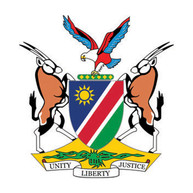
"TOSCO is a committed organization that uses tourism as a vehicle to support community-based wildlife conservation initiatives in northwestern Namibia. TOSCO played an instrumental role in assisting the Ministry of Environment, Forestry and Tourism with human-wildlife conflict, particularly the conflict between the arid-adapted lions and the local farmers in Kunene Region. TOSCO's support and involvement have led to reduced human-lion conflict incidences and have further improved the capacity of the local communities to respond to human-lion conflict incidences. Kenneth Heinrich /Uise

“In my capacity as the Director of the Namibia Association for CBNRM Support Organizations (NACSO) and having a long working relation with TOSCO, I can gladly attest to their significant contribution in promoting responsible tourism and being a link between community conservation and the tourism industry, especially in north western Namibia. By acquiring broader support in terms of funding, it will enable their activities, as an institution, to further contribute to the broader CBNRM goals.” Maxi Louis
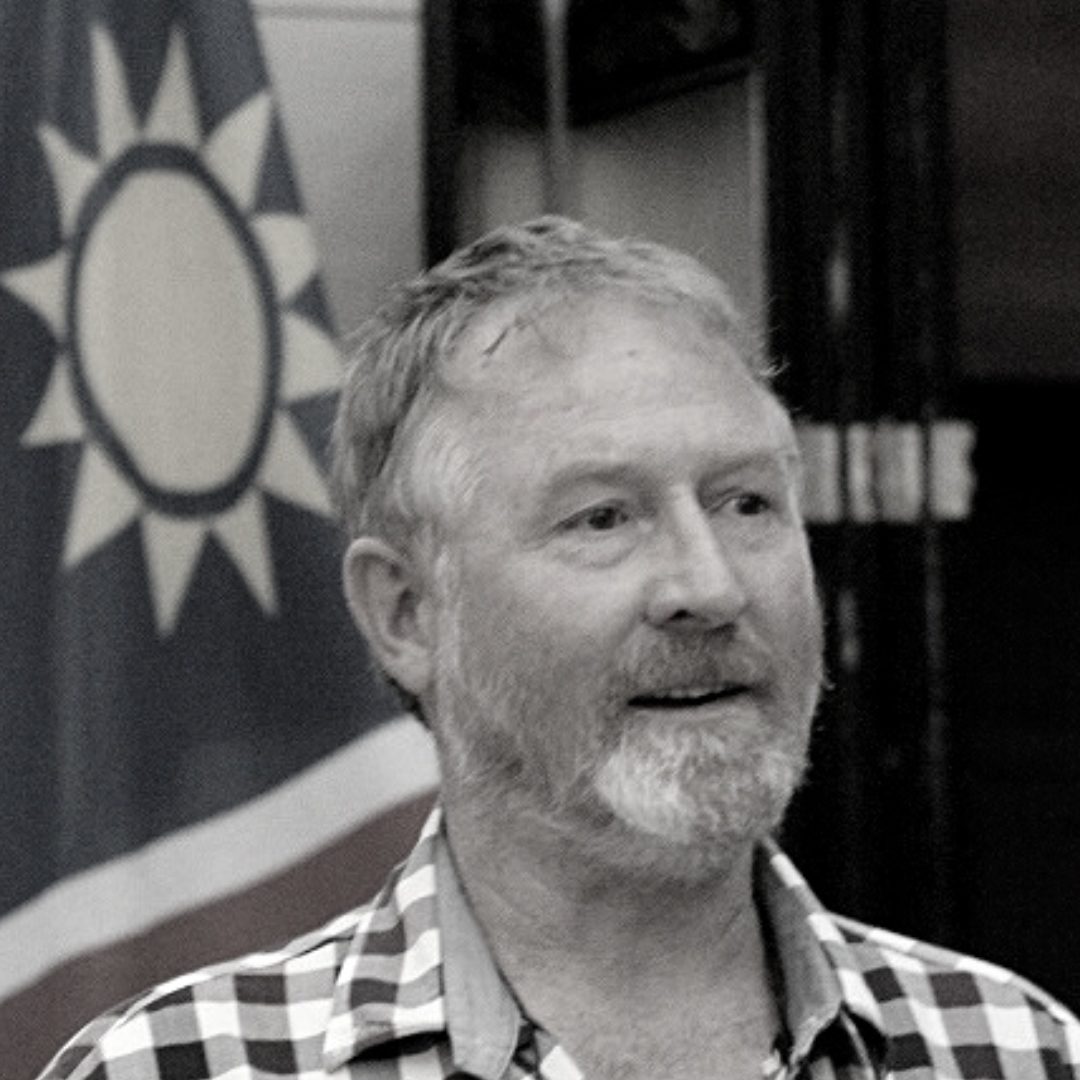
“TOSCO identifies conservation priority needs on the ground and provides timely and well-directed assistance. In this way, the tourism sector is able to achieve high-impact conservation linked to community development. (...) Their potential to continue to grow and expand their work once the impacts of COVID have passed is significant. Your assistance in helping them get through the next year is important and would be greatly appreciated by both the tourism and conservation sectors." Dr. Christopher J. Brown

"I came to learn about TOSCO by watching what they do, they speak less and do more. They have been critical in providing exceptional support to a variety of projects in the northwest. As a new upcoming support agency, their footprint in terms of support and the impact of their assistance is visible in the northwest. My feeling is that they will get their hands dirty with the massive task that they have recently embarked on in close collaboration with IRDNC and MEFT that of minimizing elephant related damages to community properties such as gardens and water points." John Kenena Kasaona
Nulla fugiat incididunt exercitation fugiat sint magna dolor nisi occaes at ecat laborum do duis adipisi es cupidatat este. Nulla fugiat incididunt exercitation fugiat sint magna dolor nisi occaes at ecat laborum do duis adipisi es cupidatat este. Nulla fugiat incididunt exercitation fugiat sint magna dolor nisi occaes at ecat laborum do duis adipisi es cupidatat este.
Nulla fugiat incididunt exercitation fugiat sint magna dolor nisi occaes at ecat laborum do duis adipisi es cupidatat este. Nulla fugiat incididunt exercitation fugiat sint magna dolor nisi occaes at ecat laborum do duis adipisi es cupidatat este.
My immense love for the natural world made me want to devote my life to conservation from an early age. My MSc in Tourism, Society, and Environment in the Netherlands grew my passion for the role sustainable tourism can take in conservation. As an avid traveler, I understand why exploring the unknown can be so enriching for many of us and I hope future generations can still enjoy traveling. I am originally from the Netherlands, and arrived in Namibia in 2016. It appeared the ultimate country to learn what successful conservation is about.
I could not have found a better organisation than TOSCO to involve tourism in the conservation equation. I joined TOSCO in 2019, initially coordinating the Desert Lion Program, and then became manager in 2020. Apart from that, I am involved in the Wildlife Credits program on behalf of TOSCO, partnering with WWF Namibia and CCFN. Through TOSCO and working with rural communities and other conservation partners, I really got to understand what successful conservation is about. I am very excited to grow TOSCO further with the team, broadening the connection between tourism and conservation by getting more of the tourism industry to join our movement, and deepening this connection by making conservation an integral part of tourism and the travel experience. I believe TOSCO with its team and programs can make a real difference!
I could not have found a better organisation than TOSCO to involve tourism in the conservation equation. I joined TOSCO in 2019, initially coordinating the Desert Lion Program, and then became manager in 2020. Apart from that, I am involved in the Wildlife Credits program on behalf of TOSCO, partnering with WWF Namibia and CCFN. Through TOSCO and working with rural communities and other conservation partners, I really got to understand what successful conservation is about.
I am very excited to grow TOSCO further with the team, broadening the connection between tourism and conservation by getting more of the tourism industry to join our movement, and deepening this connection by making conservation an integral part of tourism and the travel experience. I believe TOSCO with its team and programs can make a real difference!

Bringing Tourism Together
Promote and develop sustainable tourism.
Founded in 1989, the Tour and Safari Association of Namibia (TASA) is a voluntary private-sector body that acts on behalf of its members to encourage the development of responsible tourism in Namibia, ensure standards and reliability in the Namibian tourism industry and further the common interests of Namibian Tour Operators. Members of TASA are committed to maintaining professional standards.
TASA’s Objectives
Promote and represent members, instill confidence, support members, membership in numbers, additional incentives to tasa members.
By being a member of TASA, members will benefit from different levels of discounts from the these suppliers.
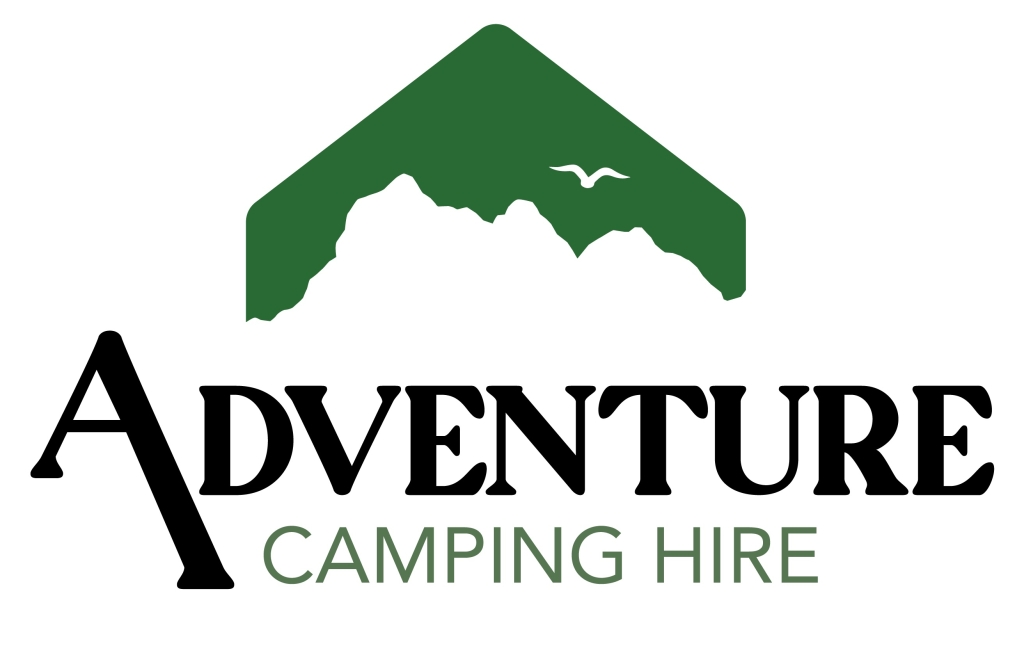
Adventure Camping Hire

Wild Rocket

NOMAD Wellness Homestead

African Packaging

ABC Stationers
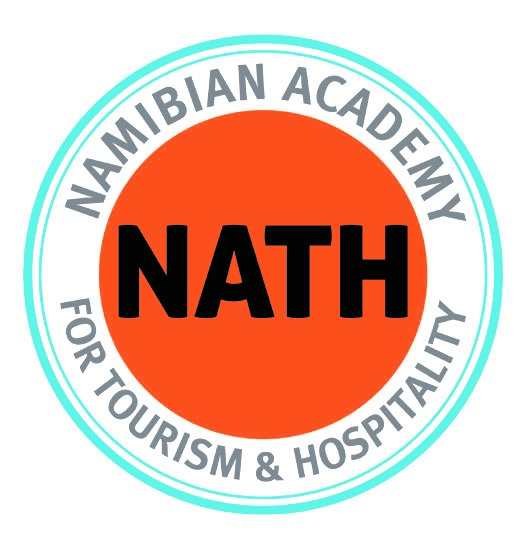
Off-Road Centre

Coastal Couriers
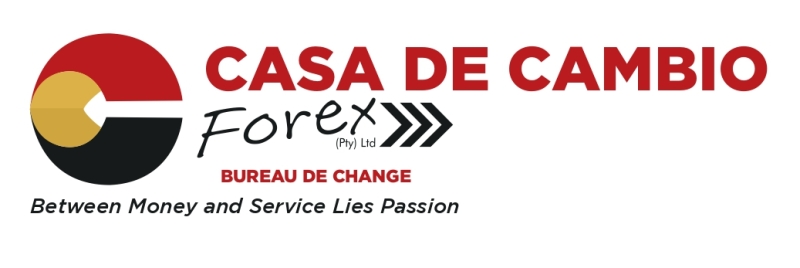
Casa De Gambio

Pionierspark Service Centre

Flamingo Inflight Services

Total Energies
Join over 500,000 students enjoying avada education now.
Become Part of Avada University to Further Your Career.
Error: Contact form not found.
Website Designed By: Wakaitu Web Solutions
Holding an MBA in Tourism, boasts significant experience in the Namibian tourism sector, including tour guiding.
With over 15 years in the industry, Delphin has served in various capacities, from professional guide, trainer, operations specialist and now owner and managing director of a tourism entity. His deep-rooted passion for travel drives him to excel, evident in his meticulous attention to detail, commitment to upholding service quality without compromise and ensuring strict adherence to all contracted agreements.
Delphin’s passion for the Namibian tourism industry has motivated him to join the TASA board in 2020.
Tom loves to work with people from multicultural backgrounds. Tom has over 10 years of experience in tourism, both as a freelance and contract tour guide with well-established companies including African Eagle, Karibu Safaris and Kodiak Island. He has worked as a tour guide specifically for key French speaking markets and currently serves as General Manager Kodiak Island since 2017. Tom has joined the TASA Board in 2022, he is open-minded and very enthusiastic about learning new skills.
Ingrid & I have set up Damarana Safaris cc in 1998, specialised on the French speaking market. From expeditions & trekking tour guide to managing Director, I developed a wide and diverse knowledge on the Namibian tourism industry… Top to Bottom! During that time, I also grew a total respect for Namibia and its people, wishing the best for both. This is why I have decided to get involved with Tasa, to give back some positive energy and a serious will to develop a profitable and equitable tourism for this country, I am considering like a home today!
Mr. Ndoroma was born on 08/03/1951, a Namibian citizen and is married with four children. He is currently the Executive Chairman of Twine Investment Holdings (Pty) Ltd, an investment and property development entity. Intermix Tours & Safaris Pty Ltd – Involved in various Tourism Activities – Travel and Accommodation
Came to Namibia in 1993, and he established a specialist safari company called SandyAcre Safaris in 1995. This was later merged with another owner-managed safari company called Tou Safaris to become Ultimate Safaris in 2008. He first joined the TASA Board in 1995 and went on from there to become the Fenata Executive officer, before becoming Fenata chairman and TASA vice-chairman of TASA in 2009. He re-joined the TASA Board in 2022, and was then re-elected as Fenata Chairman for a term from then until August 2024 when he will finally retire from active participation in Namibian tourism associations.
Originally coming from an entirely different profession, the tourism industry availed challenging possibilities in 1996 when starting at Trans Namibia Tours, where we discovered the endless possibilities which tourism offers. With an ever growing love for Namibia, the neighboring countries and the captivating beauty of Africa, it became more than a job, it became a lifelong passion. Since 2001, Exclusive Africa Tours & Safaris and our valued partners, gave us 22 years of product knowledge within the African Tourism & Travel industry. Till date this “passion” keeps the fire burning to put Namibia on the map, and to discover & offer exiting adventures to our valued guests. Namibia however always remains “the smile on the Face of Africa”
Born and bred Swakopmunder, returned to Namibia in 2015 to join her family-business, Namibia Tracks & Trails. After working for various touring companies in South Africa since 1999, Wiebke now heads up the NTT team in Swakopmund. Wiebke joined the TASA board as a co-opted member in 2020 and has been appointed the TASA secretary in 2022.
I have worked in the tourism industry for over 26 years in various sectors, including charters, hospitality, car rental, Air Namibia and Wilderness for the past 7 years now as regional travel manager, overseeing the entire reservations and office team at the “Namib Travel Shop”. I am very passionate about our country and love sharing our amazing landscapes and experiences with our guests.
Federation of Namibian Tourism Associations, Netumbo Nashandi, Windhoek, Namibia
Netumbo Nashandi, Chairperson
Discover Namibia’s communal conservancies
Inspired. authentic. unforgettable..
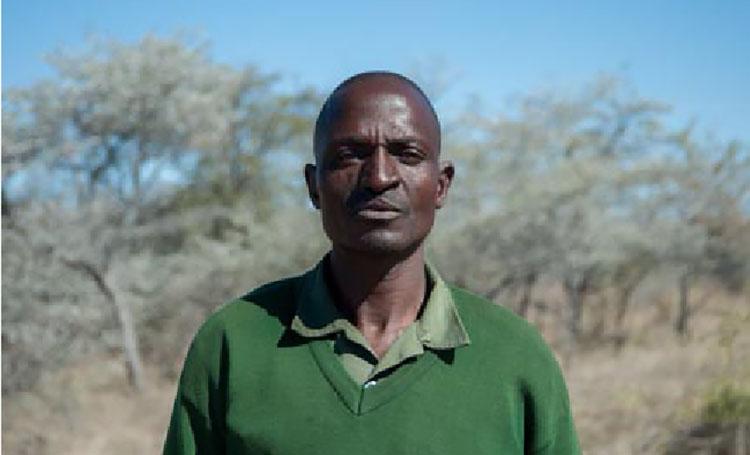
✔ Authentic tourism changing lives
✔ providing meaningful employment, ✔ promoting responsible travel, ✔ supporting free-roaming wildlife, explore namibia’s communal conservancies where conservation, culture and authentic experiences are at the heart of a journey of a lifetime..
From the rivers of the Zambezi to the mountains of the Kunene, from the baobab studded forests of the east to the deserts in the south, Namibia’s communal conservancies encompass over 20% of the country’s land. One in four rural Namibians is a resident of a communal conservancy, where community members have the rights and responsibilities to use their natural resources sustainably, including making the bold choice to live with wildlife.
Decades of hard work and dedication by conservancy members have led to incredible results: the expansion of wildlife range and numbers, preservation of unique cultures, and the opportunity to partner with world-class tourism establishments to offer authentic travel experiences where your stay contributes directly to conservation and community development.
Explore the myriad of exciting tourism opportunities in Namibia’s communal conservancies, then contact tourism operators in your country or conservancy Joint Ventures* in Namibia to book a trip of a lifetime.
*Joint Ventures are tourism partnerships between communities who have the tourism rights to an area and private sector tourism operators who provide funding and expertise
Your journey starts here!
Where to go, discover the best of namibia.
Use the photo-links below to start exploring the fascinating areas that are home to 86 conservancies or read more about where to go .

Remote, rugged and extraordinarily beautiful, Namibia’s north west is home to a rich variety of conservancies where space for wildlife, contemplation and traditional lifestyles helped to inspire Namibia’s communal conservancy movement.
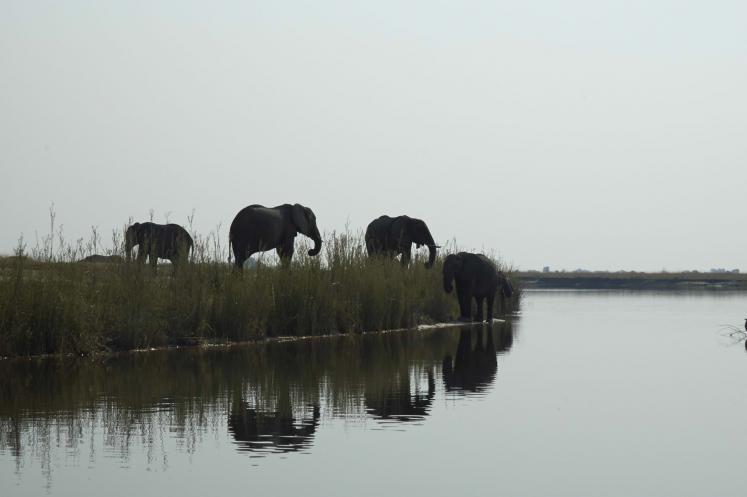
Water is life, and a rare luxury in Namibia, one of the most arid countries in the world, but the north east is different. It is riddled with rivers: the Kwando, Linyanti, Chobe, and Zambezi. Each river has its own pattern, power, mystery and history to draw you here.

Central & West
Home to desert dwelling elephants, Namibia's highest mountain and rich cultural engagement, Namibia's central and west region offers a definitive conservancy experience.

A place of wonder and raw beauty, the eastern part of Namibia is where you venture to discover an untamed landscape where the past comes to life.

Namibia's northern region is one of the country's best kept secrets. It extends from the northern border of Namibia's famous Etosha National Park, across white, calcrete plains studded with Makalani palm trees and traditional wooden kraals and homesteads to the flowing waters of the perennial Kunene and Okavango rivers.
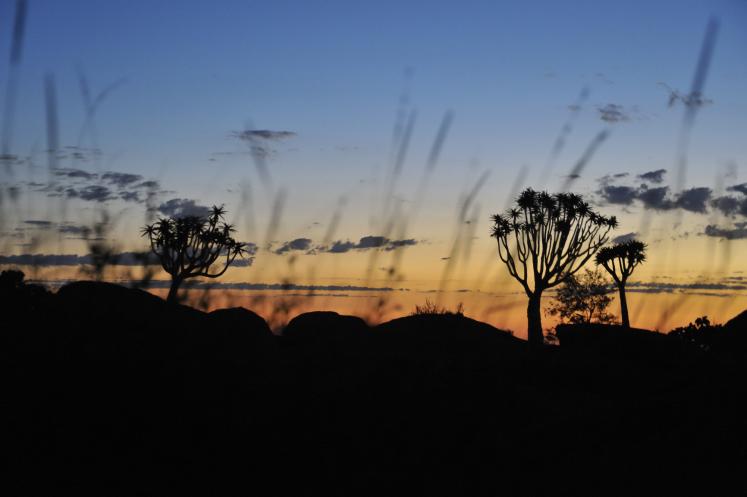
Given the vast, sparsely inhabited spaces of Namibia's south, it is unsurprising that there are a just a few conservancies here, but their establishment is important to the sense of ownership and responsibility felt by their residents.
Experience the authentic Namibia
Get started by exploring our suggested activities below or read more about what to do .
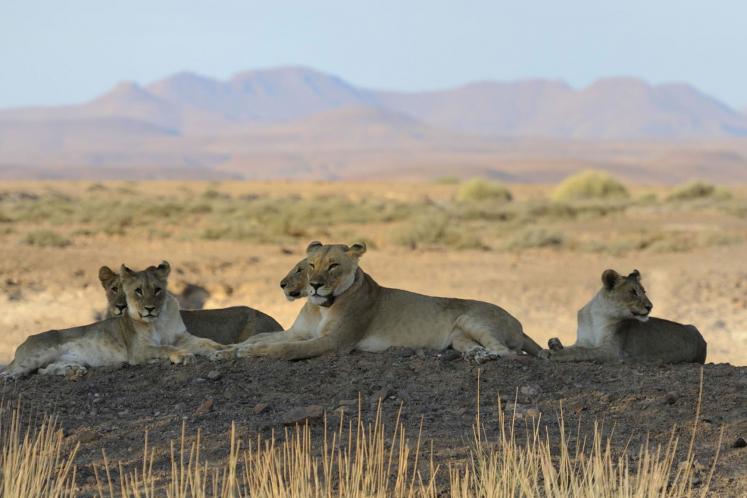
Go wild! From the big five to the little five and everything in between, Namibia's communal conservancies are home to a mosaic of life that transforms this diverse and spectacular landscape.
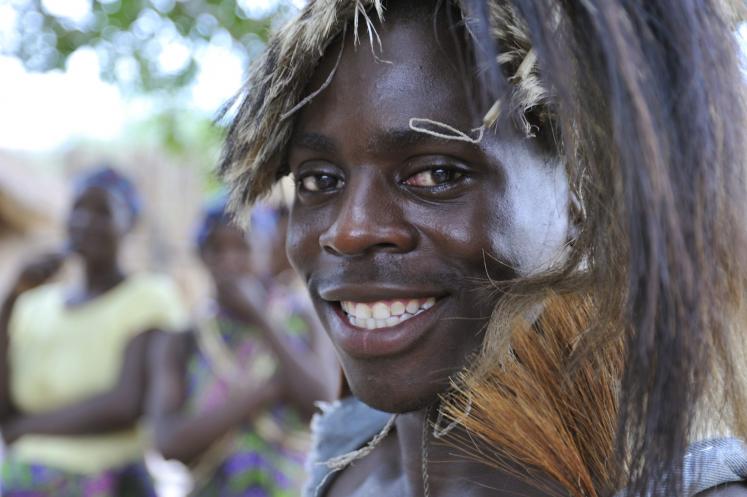
Authentic, ancient and evolving, Namibia’s cultures and people are vital to the spirit and the future of our communal conservancies.
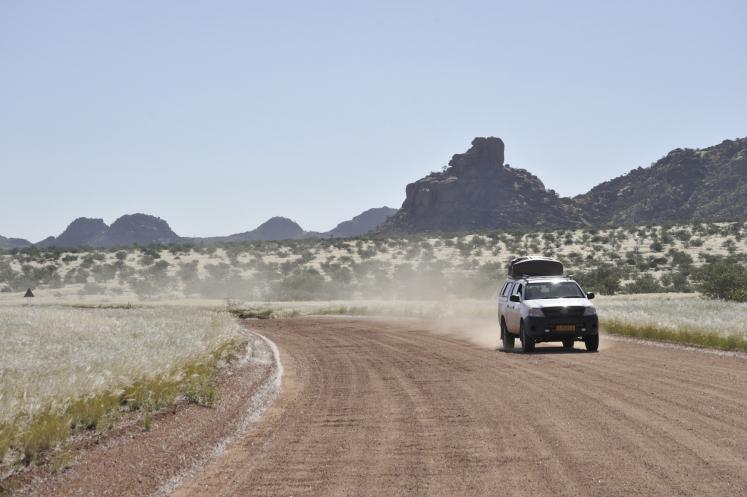
Climb. Row. Pedal. Release. Relax. Namibia's communal conservancies pack an adventure punch!

Birdwatching
Tick and tweet to your heart's content in Namibia’s communal conservancies! With 676 species to search for, Namibia is a paradise for birders.
4x4 routes & camping
Highways lead to by-ways that lead to countless side tracks in Namibia’s communal conservancies, just waiting to be explored by the intrepid traveler. From rocky rugged passes in the northwest to the east where water turns tracks into muddy quagmires, there are challenges for the toughest vehicle and driver.
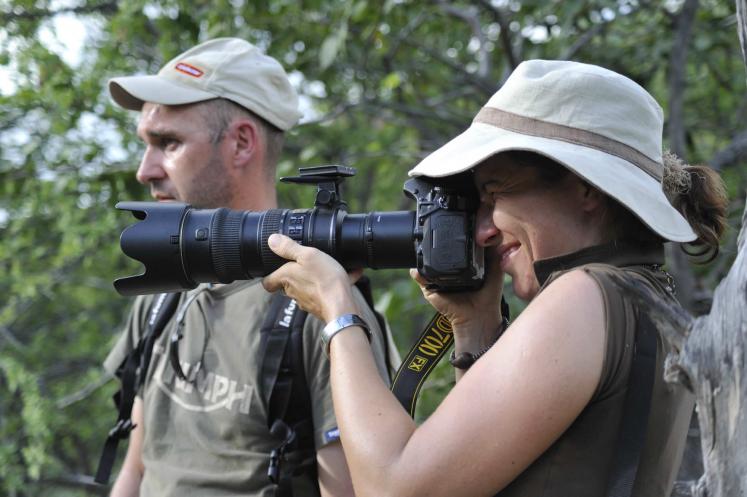
Photography
Namibia is a photographer’s dream. There are magical hours, days and nights. Spectacular wildlife, landscapes and people of old, evolving cultures found in Namibia’s communal conservancies provide endless opportunities for keen amateur and professional photographers to capture stunning images.
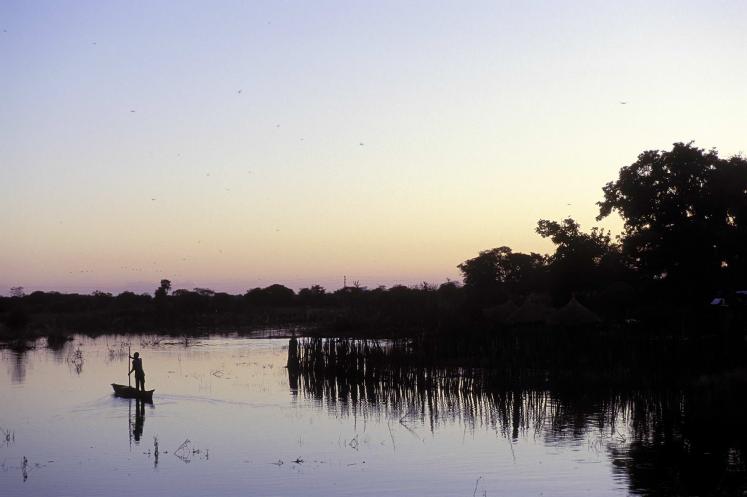
Boating & fishing
The perennial rivers of the South, the North and North West offer unique boating and fishing opportunities from tranquil sundowner cruises to catch-and-release battles with tiger fish.
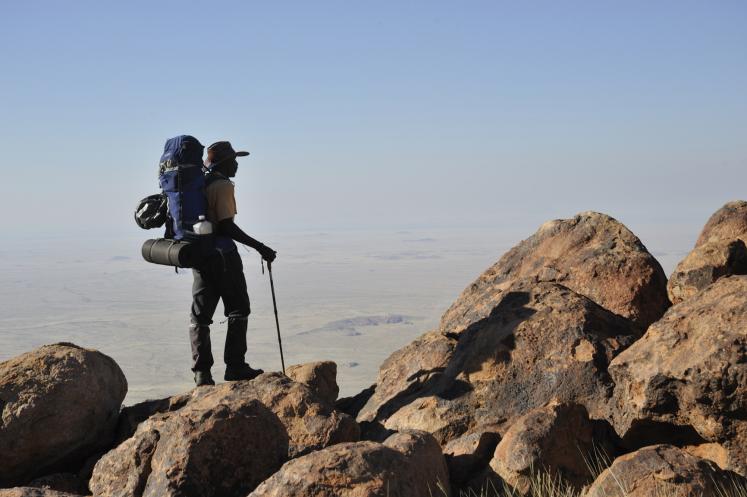

Biking, Hiking & Climbing
For the outdoor enthusiast, Namibia's communal conservancies offer the space for easy rides and gentle hikes or more strenuous challenges that will challenge the most serious biker, hiker and climber.
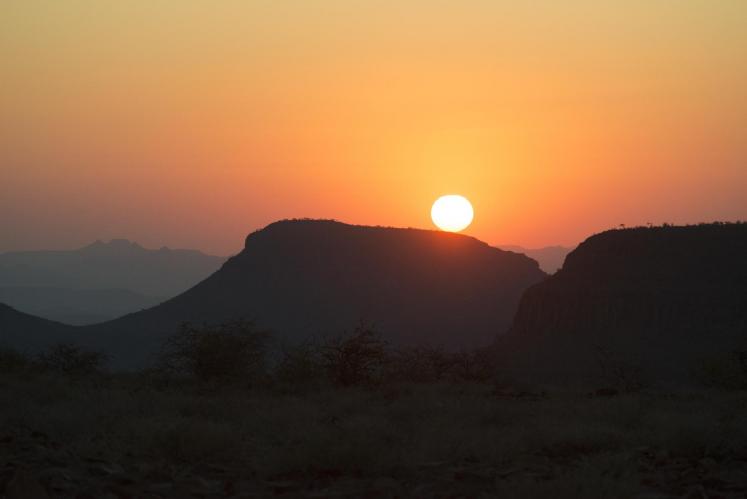
Landscapes & Geology
Mountains, dunes, dry riverbeds and rivers running wild, Namibia's communal conservancies offer visitors the chance to lose and find themselves in some of the most spectacular landscapes on earth.
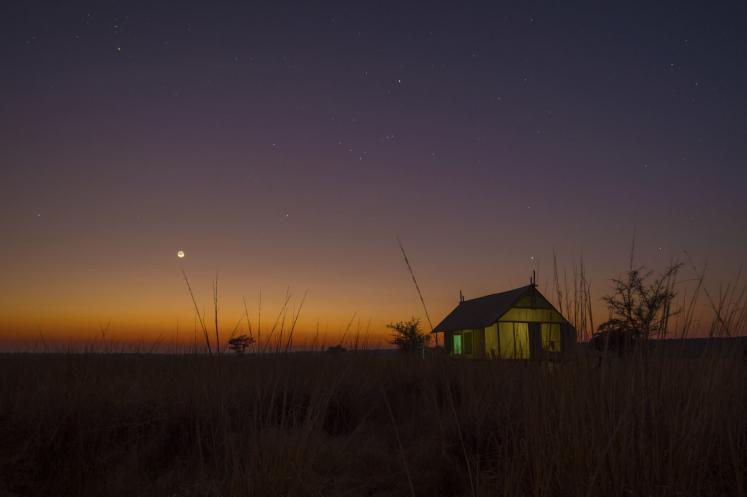
Space & contemplation
Namibia’s is the second most sparsely populated country in the world, second only to Mongolia. In the country’s communal conservancies there is space to explore, space for camping, space for connecting and space for contemplation.

Celebrations
Namibia is a bucket list destination so why not celebrate! The perfect sunset, your first sighting of an elephant, your first day as a married couple, Namibia's communal conservancies provide the perfect backdrop to celebrate the milestones of life.
Plan your trip
Explore different regions and add diverse activities to form one incredible trip… and another…and another… there is no end to the number of combinations that lead to adventure!
Get inspired and start planning your trip.
Namibia's Communal Conservancies
Responsible travel in namibia, more information, search form.
- Find us here
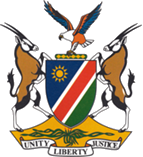
Website by Jaro Consultancy

Namibia, Africa’s Tourism Success Story
The Zambezi River curls by my deck at the Ntwala Island Lodge, dark river beneath a muted orange and red sun, dying to the African day. The river is laced with crocs, peppered with hippos, and surrounded by clouds of birds, cawing, screaming and cooing. There are super aggressive fish in the river—tiger fish that make piranhas look like sweet, little cuddlers. The place is bonafide, non-Middle-Earth magical.
We’ve flown, driven, walked, and boated our way across two borders today–from Namibia (“Please fill out the disembarkation card, sir”) into Botswana (“Please fill out the embarkation card, sir”) out of Botswana and back into Namibia. Our flight was in a six-seater plane for three-plus hours over vast desert plains with scrub brush, sand, and rock. Occasionally water would show up on the scene and we all eagerly leaned to the windows to see if wildlife would show.
There was a running herd of warthogs, a lot of land crossed by human and game trails—and devoid of roads. And then suddenly, there were elephants. Dozens of them, big and small. Our plane was only 100 feet above the ground, and we were whisked above the giant gray beauties. I found myself smiling despite being jetlagged, a little sick, and weary of being in transit. Finally, really, truly we were in Africa. I sheepishly asked a new friend in Namibia: “Um, do you know where The Gods Must Be Crazy was filmed?” I felt stupid for asking another Americlown tourist inquiry. But she smiled and said, “Actually you flew over the spot.” Suddenly the question was okay, and it was pleasant to realize the quirky movie in my head was the place!
Occasionally, Willem, our pilot and a shareholder in six lodges around Namibia would shout something over the hum of the plane. “That’s the hill where the local bushmen gather once a year! Do you see the elephants in the water!? The lodge we just buzzed is one of ours… I need to call them to tell them we’re not coming to the airport!” And my favorite: “No. Those are cattle.”
The story of wildlife and people and tourism in Namibia is beautiful—and stark. Forty-two percent of the land is protected by the government. There are more than 70 community-run conservatories that protect the wildlife for tourists and hunters, very managed, mind you, in such a way that the average Namibian in a conservatory (there are more than 400,000 that live inside them) sees financial value in protecting their wild stock. Gone are the days of rampant poaching as the people who live there can declare: “This is ours! You cannot disrespect and steal from us” Or something along those lines. Gone are the days of 20 or 30 (who knows?) game ranges with their 40 to 60 eyes. Now there are 800,000+ eyes watching to be sure that the rhino beds safely tonight. Certainly it’s not perfect and the system can break down—we humans will do what we do. But Namibia is a tourism success story to be told. And seen.
Tiger fishing for half a day proved to be a success. There’s a reason why tiger fish are not named poodle fish. They are named tiger fish because they have big, offset triangular teeth and hit the fishing line so hard that every time it happened I couldn’t suppress a huge laugh of amazement and joy. The guide told stories—some that I wanted to have happen to me. “That day we caught the biggest tiger fish of all and saw elephants next to the river.” Other stories (in my Heart of Darkness) I wanted to have happen to the guy who bullied me in 9th grade. “So then the hippo lunged up under our boat when we were going near full-speed, and we all flew into a heap onto land screaming and stumbling on all fours to escape!”
The afternoon ended in a flurry of smiles and lies about fish numbers and sizes between the different boats, and we were off to meet the local tribe who benefits from the tourism there.
- Nat Geo Expeditions
It is an amazingly complicated scenario, but it is working. The WWF, local tribes, the federal government, local lodge owners, and others are working together to see that a tourist’s money actually benefits everyone, not just one party. Tourism doesn’t always protect wildlife, locals, and business interests. But it can. And it’s beautiful even in the tension that is inevitable in such a complicated system.
Later on the trip I was able to visit a desert lodge operated by Wilderness Safaris that focuses on the desert rhino. It’s in a vast, lightly populated named Damaraland. While we didn’t see the ethereal rhinos, we did see a lot of game, including a herd of desert elephants, which live in an incredibly austere environment and still manage to be elephantine.
Namibia is a land of adventure of many stripes—from the soft and cushioned clean-hands adventure to the difficult wearying treks, this is a destination that must be experienced first hand to be fully believed. With recovering wildlife stocks, sparse population, spotty history as a former part of South Africa, and larger cities founded originally by German colonists, one of the funny sayings about Namibia that seems to bear some truth is “It’s like Africa—only better”.
Related Topics
- ADVENTURE TRAVEL
FREE BONUS ISSUE
- History & Culture
- Photography
- Environment
- Paid Content
History & Culture
- Mind, Body, Wonder
- Terms of Use
- Privacy Policy
- Your US State Privacy Rights
- Children's Online Privacy Policy
- Interest-Based Ads
- About Nielsen Measurement
- Do Not Sell or Share My Personal Information
- Nat Geo Home
- Attend a Live Event
- Book a Trip
- Inspire Your Kids
- Shop Nat Geo
- Visit the D.C. Museum
- Learn About Our Impact
- Support Our Mission
- Advertise With Us
- Customer Service
- Renew Subscription
- Manage Your Subscription
- Work at Nat Geo
- Sign Up for Our Newsletters
- Contribute to Protect the Planet
Copyright © 1996-2015 National Geographic Society Copyright © 2015-2024 National Geographic Partners, LLC. All rights reserved
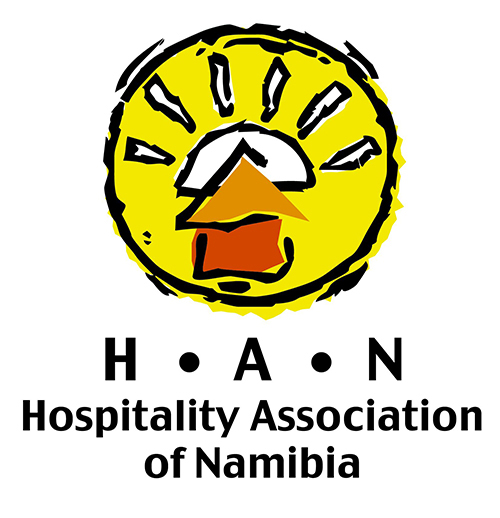
- Members Directory
- Announcements
- Where To Stay
HOSPITALITY ASSOCIATION OF NAMIBIA
Welcome to HAN
The Hospitality Association of Namibia has since its inception in 1987, grown from an initial 16 members to a total of close to 400 members.
H·A·N represents the full spectrum of the hospitality industry, from hotels, to guest houses, guest farms, lodges, rest camps, restaurants, conference centres and catering services.
Service is key to the hospitality sector, and as such, the Hospitality Association of Namibia has identified 5 core values for the association and its members that focus on the need and essence to serve guests, the industry and the country we operate in. SERVE is thus the word that summarizes HAN’s core values that speak to Service, Excellence, Respect, Value and Ethics in all operations HAN members engage in.

HAN MEMBERSHIP
Membership Application
Become a member of the Hospitality Association of Namibia by downloading the full application (via the link below), completing the form and then emailing it back to HAN for processing.
ANNOUNCEMENTS
HAN Activities
Stay up-to-date with the latest news and announcements from the Hospitality Association of Namibia.
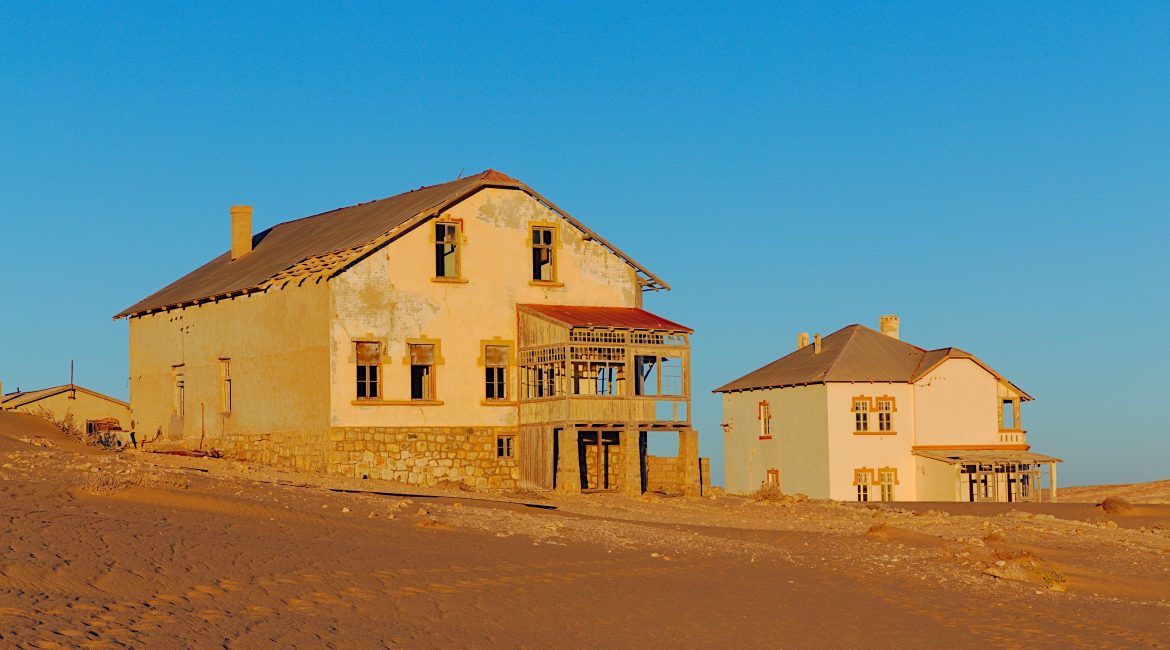
Help collect tourism data
One cannot manage such, that you do not measure is the driving principle HAN follows in encouraging its members to submit monthly room and bed occupancy statistics to help measure the performance of the hospitality sector. Statistics forms, identical to the ones that need to be submitted to the NTB with tourism levy payments, are provided to members, and a monthly, quarterly and annual report of accommodation performance is then compiled by HAN and distributed to interested stakeholders, including banks, statisticians, investors and the industry as such.
HAN is also keen to encourage other sectors within tourism, including car rental, tour and activity operations to measure and record performance within their sectors, to be able to give a wide reflection of the Namibian tourism industry.
CONTACT HAN
Get in touch
Any questions or queries regarding the Namibian Tourism Industry, contact us at HAN either telephonically or by completing the form made available.
Tel: +264 (61) 222 904 P.O. Box 86078, Windhoek, Namibia
Privacy Overview
Official Launch of The National Strategy on ‘Sustainable Heritage Tourism Development and Employment Creation Opportunities at Community Level in Namibia’
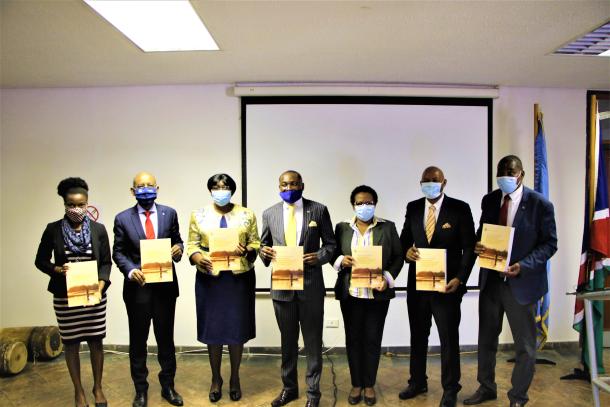
Related items
- Country page: Namibia
- SDG: SDG 11 - Make cities and human settlements inclusive, safe, resilient and sustainable
This article is related to the United Nation’s Sustainable Development Goals .

Other recent news

- Ready-made safaris
- Experiences
- Special offers
- Accommodation
- Start planning
- Booking terms
- When to go on safari - month by month
- East or Southern Africa safari?
- Solo travellers
- Women on safari
- Accommodation types & luxury levels
- General tips & advice
- All stories
- Afrika Odyssey Expedition
- Photographer of the Year
- Read on our app
- 2024 entries
- 2024 details
- 2024 prizes
- 2024 entry form
- 2023 winners
- Collar a lion
- Save a pangolin
- Rules of engagement
- Job vacancies
- Ukuri - safari camps

Does tourism benefit local people? A Namibian case study
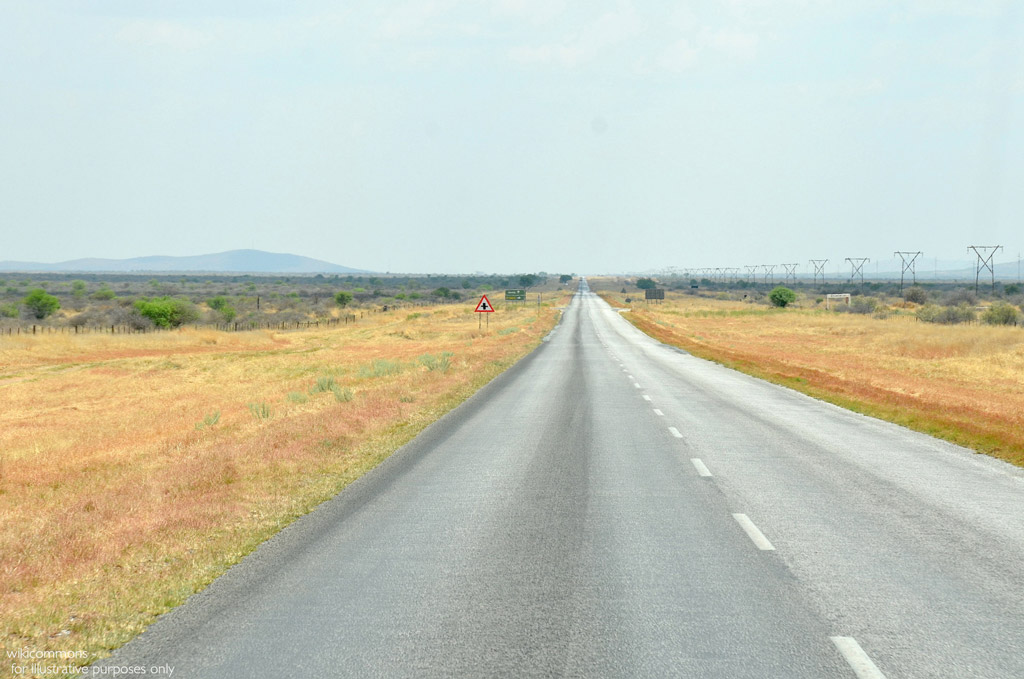
One of the fundamental arguments for wildlife tourism in sub-Saharan Africa is that it theoretically offers the ideal sustainable development plan: simultaneously stimulating poor rural economies, offering local value and preserving natural ecosystems. The success and value brought by tourism operations are contingent upon a host of different factors, including infrastructure. At the same time, the tangential benefits extend to external industries such as local agricultural production and transportation. Now, comprehensive new research delves into the benefits and challenges facing Namibia’s Zambezi region and associated Walvis Bay-Ndola-Lubumbashi Development Corridor.
The concept of a development/growth corridor as a spatial development instrument is a relatively simple one. In tourism, it essentially means an area that is identified as being particularly valuable for investment in infrastructure and targeted interventions to boost industries. In this example, the Walvis Bay-Ndola-Lubumbashi Development Corridor (WBNLDC – based upon the previous Trans-Caprivi Corridor) was created to connect Namibia’s capital city Windhoek to the remote and previously hard-to-reach Zambezi region. The development went beyond simply tarring the road and improving infrastructure to lay down the groundwork for “hubs”, “gateways”, and targeted value-chain promotion (involving private individuals, businesses, and state organisations).
In analysing the effectiveness of the WBNLDC, the authors set out to answer two main questions: whether or not the growth corridor succeeded in enhancing value creation from tourism in the remote Zambezi region and whether the local residents could appropriate the created value.
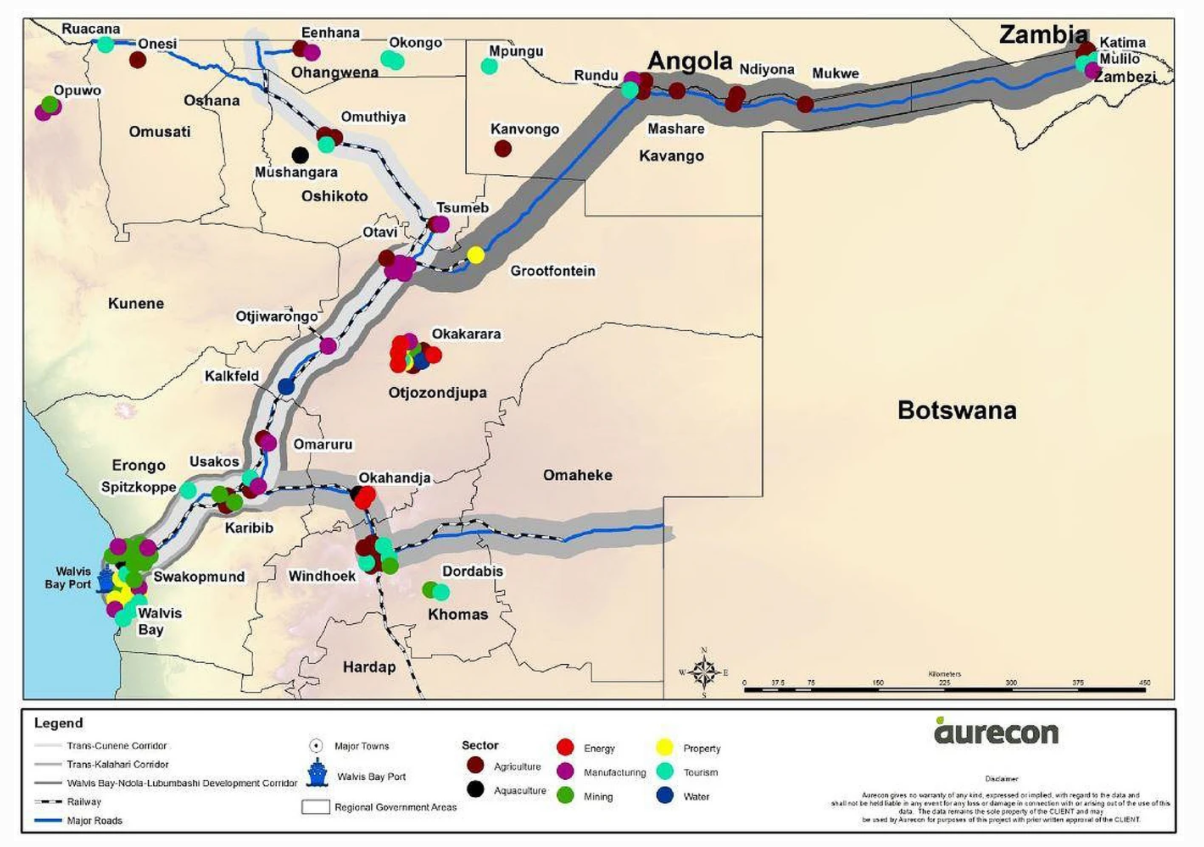
To answer these questions, they set about a complex analysis of several different data sets, including a business survey, qualitative interviews with tourism stakeholders, a traffic census, and a household survey. They also considered the history of the Zambezi region, scientific and government reports going back decades and the policy plans and reports relating to the WBNLDC. By collating a multi-perspective approach, their research goes to considerable lengths to convey just how complex such an analysis of tourism can be.
The number of accommodation establishments in the Zambezi region doubled from 2005 to 2018, as did the estimated number of visitors. Around a third of these visitors were domestic tourists, with Europeans accounting for the most numerous foreign visitors. The qualitative interviews with tourism operators indicated that the tarring of the main road, in particular, had contributed to the expansion of the tourism sector.
The authors conclude that there is a definitive link between infrastructure development and tourism-orientated policies on the one hand and increased value creation from tourism in the region on the other. In other words, the development of the WBNLDC was successful in helping to foster tourism in the Zambezi region by improving access.
However, despite intentions to the contrary, proportionately few rural residents have benefitted. Within the Zambezi region, only 4% of the respondents to the survey (652 households) are employed in tourism or the conservancies. Almost all of those were employed in low-wage jobs such as waiters/waitresses, security guards or bartenders at the lodges. The authors calculated that tourism contributed just 5.5% of the household income of the rural population in the Zambezi region. The indirect contributions – such as the procurement of food and building materials – were also found to be relatively minimal. However, through contributions to the national tax base, the expansion of the tourism industry also benefits households through social grants.

The loss of wildlife habitats in sub-Saharan Africa is one of the greatest threats facing conservation on the continent. Most conservation scientists agree that to mitigate this problem, the livelihoods of local residents need to benefit from wildlife. The findings of marginal benefit to rural residents are in line with previous studies from Botswana and Uganda and speak to the necessity of investigating why this is the case and how to remedy the problem. To this end, the authors point to three issues in need of further exploration:
- The configuration of the tourism industry – particularly with regard to where operations and their spin-offs are situated and who owns these.
- The distribution of benefits from tourism activities.
- The entry barriers that hinder local residents from participating in the industry other than via low-wage jobs.
The study also suggests that tourism should be used as a catalyst to stimulate other economic activities connected to conservation because wildlife tourism cannot simply be upscaled without risking the environment’s integrity.
The extensive study can be accessed here: “ Do tar roads bring tourism? Growth corridor policy and tourism development in the Zambezi region, Namibia ”, Kalvelage, L. et al. (2021), The European Journal of Development Research
HOW TO GET THE MOST OUT OF AFRICA GEOGRAPHIC:
- Travel with us . Travel in Africa is about knowing when and where to go, and with whom. A few weeks too early / late and a few kilometres off course and you could miss the greatest show on Earth. And wouldn’t that be a pity? Browse our ready-made packages or answer a few questions to start planning your dream safari .
- Subscribe to our FREE newsletter / download our FREE app to enjoy the following benefits.
- Plan your safaris in remote parks protected by African Parks via our sister company https://ukuri.travel/ - safari camps for responsible travellers

Friend's Email Address
Your Email Address
UN Tourism | Bringing the world closer
- All Regions
- 15 Oct 2014
Review of Tourism Growth and Development Strategy for Namibia

share this content
- Share this article on facebook
- Share this article on twitter
- Share this article on linkedin
Upon the request of the Government of Namibia, the World Tourism Organization (UNWTO) carried out a detailed review of the NTGDS and NTIPPS and fielded a mission to the country to facilitate the public consultation exercise of the two documents. The UNWTO mission also conducted detailed discussions with key industry players and other stakeholders on their perspectives and vision of Namibian tourism.
Following the review of the two draft strategies and the consultations with stakeholders, UNWTO conducted a benchmarking exercise with selected best performing countries in Sub-Saharan Africa and prepared a detailed report. The report, which includes an analysis of Namibia’s strengths and weaknesses as a tourist destination and corresponding recommendations, will guide and oversee the implementation framework of both the NTGDS and NTIPPS.
Related Content

UN Tourism and UN Habitat Partner for a Better Urban Fu...

New Products and Experiences: an opportunity for mounta...

UN Tourism reports openness is back to pre-pandemic levels

UN Tourism to Make Residents Focus of Thassos Island’s ...
Erf 842 Dr. Kenneth Kaunda Street, Windhoek, Namibia
- Request For Quotation
- Photo Galleries
- +264 61 284 2111 [email protected] -->

+264 61 284 2111
Global Certificate
ISO 9001:2017
Tsau //Khaeb (Sperrgebiet) National Park, Namibia
White Rhinoceros in Etosha National Park
White Ghost Elephants of Etosha
Flamingos in Dorob National Park
Carmine bee-eater with dragonfly catch, Kwando river
Game at the waterhole in Etosha National Park
The state of the art MET Head Quarters
Zebras in Etosha National Park
Optional Title Center
Optional sub-title center.
Button Left Button Right
17 Years Of Excellence In
Forestry industry.
You have ideas, goals, and dreams. We have a culturally diverse, forward thinking team looking for talent like.
Our Service
Important optional announcement box that only displays if there is a valid and active announcement
Quick service, professional team.

Environmental Impact Assessment
Ministry of Environment, Forestry and Tourism is responsible for Environmental ...

Permits are issued to protect the integrity of our wildlife and natural resources to ...

Community Based Natural Resources Management

Concessions
The Policies and Legislation section contains documents pertaining to ...

National Parks
The country has an extensive and internationally renowned protected ...

Tourism is one of the economic pillars which plays a major role to GDP contribution ...

Policies and Legislation

Administration
A mature, sustainable and responsible tourism industry contributing significantly to ...

Beautiful Namibia - Visit Us
A country of gripping beauty, wide open spaces and abundant sunshine’s of ...
Government Communication System Feedback form
Click on the title to give our ministry feedback on the official communication channel
The mission of the Ministry of Environment, Forestry and Tourism is to promote biodiversity conservation in the Namibian environment through the sustainable utilization of natural resources and tourism development for the maximum social and economic benefit of its citizens.
To be a leader in the conservation and tourism development through innovation and partnership.
The mandate of the Ministry is therefore derived from the Constitutional provision.
Chapter 11: Principles of State Policy
Article 95: Promotion of the Welfare of the People
The state shall actively promote and maintain the welfare of the people by adopting, inter alia, polices aimed at the following:
“Maintenance of ecosystems, essential ecological processes and biological diversity of Namibia and utilization of living natural resources on a sustainable basis for the benefit of all Namibians, both present and future; in particular, the Government shall provide measures against the dumping or recycling of foreign nuclear and toxic waste on Namibian territory”.
Latest News and Press Releases

Global SMART User Conference March 2024
Commemoration of the world wetlands day and world water day, world wild life day.

Namibia-Zambia Beekeeping Learning Exchange Visit

Thandler Airport Water Reclamation Facility Expansion Project Named

Silicon Bench And Cornike Begin Construction Solar Facilities

Covid-19 Updates
Covid-19 regulations.
In terms of section 29(1) of the Public and Environmental Health Act, 2015 (Act No. 1 of 2015)...
Conservancy Areas
Community Forest
Did you know- In the 20th century, the Rossing Uranium Mine -located in the heart of Namibia — was the world’s largest uranium mine.
Announcement!
Official websites use .gov A .gov website belongs to an official government organization in the United States.
Secure .gov websites use HTTPS A lock ( A locked padlock ) or https:// means you’ve safely connected to the .gov website. Share sensitive information only on official, secure websites.
- Search ITA Search
- Market Overview
- Market Challenges
- Market Opportunities
- Market Entry Strategy
- Agricultural Sector
- Mining and Minerals
- Oil and Gas
- Port Equipment
- Travel and Tourism
- Commercial Fishing
- Trade Barriers
- Import Tariffs
- Import Requirements and Documentations
- Labeling and Marking Requirements
- Export Controls
- Temporary Entry
- Prohibited and Restricted Imports
- Customs Regulations
- Standards for Trade
- Trade Agreements
- Licensing Requirements for Professional Services
- Distribution and Sales Channels
- Selling Factors and Techniques
- Trade Financing
- Protecting Intellectual Property
- Selling to the Public Sector
- Business Travel
- Investment Climate Statement
Namibia has a unique mix of wildlife, spectacular scenery, and diverse cultures. Natural attractions include the Namib Desert, which is the oldest desert in the world; the Fish River Canyon, which is the second-largest canyon in the world after the Grand Canyon; the world-famous sand dunes at Sossusvlei; the Skeleton Coast with its extraordinary landscapes; and Etosha National Park, one of the largest game reserves in Africa. Coupled with its natural beauty, Namibia’s good road infrastructure, potable water, and lower levels of crime than most of its neighboring countries make it an ideal destination for tourists.
According to local economic think tank Simonis Storm, travel and tourism contributed approximately 12 percent of GDP in Namibia, and 5.7 percent to total employment in 2022. Excluding neighboring African countries, the United States represents Namibia’s third-largest tourist market (behind Germany and the United Kingdom). Many American tourists visit as part of package tours. American game hunters are a growing and important segment for Namibian tourism operators.
Leading Sub-Sectors
- Hospitality, restaurant, hotel management and training
- Packaged tour services, especially in niche segments
- Information technology solutions for the hospitality industry
- Specialized equipment for remote (off-grid) lodging
Opportunities
Firms interested in sending tourists to Namibia should seek partnering opportunities with local operators. Firms may wish to focus on specific niches. Niche tourism opportunities include:
· Wildlife safaris – Etosha National Park and other parks offer world class safaris with upscale lodging both inside and near the parks.
· Hunting tours – Namibia has a well-developed game and trophy hunting sector.
· Cultural / Educational tours – Namibia is an excellent location for tourists interested in learning about the cultural anthropology of Southern Africa. Tours are available for people interested in learning more about the San, Herero, Himba, Oshiwambo, Nama, Damara, and other Namibian ethnic groups. Some tourists look for educational experiences and want to learn about Namibia’s unique climate and geography (including its two world famous deserts, the Kalahari and Namib).
· Adventure tours – Many travelers enjoy the unique adventure opportunities (sand boarding, kite surfing, sky diving, quad biking, mountain biking, hiking, camping, etc.) which Namibia offers. There are a number of endurance race events (running, biking, and mixed sports) hosted in Namibia.
· Ecotourism – Increasingly, tourists want to stay at destinations that have minimum impact on (or blend in with the) the environment. Lodging and tour companies are increasingly catering to this market.
Firms interested in developing partnerships should consider attending the annual Namibia Tourism Expo, held in May/June of each year.
Operators (tour/transport companies, hotels, and restaurants) will increasingly need information technology solutions that will allow them to better control costs and understand their customers’ demands. While there are some larger tour operators and lodging companies providing state of the art information technology solutions, the Namibian tourism market is still highly fragmented with many small operators. Most small operators only have a limited Internet presence. Companies that can provide cost effective internet-based marketing and booking solutions could find willing customers in Namibia.
Growth in the tourism sector is also fueling development and construction of new lodging in both urban and remote areas. Partnering for construction jobs might be a possibility for U.S. firms, but it will likely be difficult for U.S. firms to win construction contracts as there are many qualified local and South African firms. Chinese construction firms have also penetrated the Namibian construction market in recent years. There are opportunities for firms that can provide specialized eco-friendly equipment and supplies – water and sanitation, energy, hygiene, etc. – for new lodges in remote areas. Existing lodges that are expanding or rehabilitating may also be looking for these types of equipment.
· Namibia Tourism Board (https://visitnamibia.com.na/)
· Namibia Tourism Expo (http://nte.nmh.com.na/)
· Hospitality Association of Namibia
· Federation of Namibia Tourism Associations
· Ministry of Environment, Forestry & Tourism .
- You are here:
- Member homepage
- Content library search
World Tourism Organization Visits Namibia

IMAGES
COMMENTS
DID YOU KNOW Interesting facts to know before visiting Namibia. Houses the Oldest Desert Only desert in the world where you can find large mammals like elephants, rhinos, lions and giraffes. Highest Sand Dunes Sossusvlei Sand Dunes are some of the highest in the world. Second largest Canyon Home to the Fish River Canyon.
"TOSCO is a committed organization that uses tourism as a vehicle to support community-based wildlife conservation initiatives in northwestern Namibia. TOSCO played an instrumental role in assisting the Ministry of Environment, Forestry and Tourism with human-wildlife conflict, particularly the conflict between the arid-adapted lions and the ...
Founded in 1989, the Tour and Safari Association of Namibia (TASA) is a voluntary private-sector body that acts on behalf of its members to encourage the development of responsible tourism in Namibia, ensure standards and reliability in the Namibian tourism industry and further the common interests of Namibian Tour Operators.
The Namibia Tourism Board (NTB) was established by an Act of Parliament: the Namibia Tourism Board Act, 2000 (Act 21 of 2000). Its primary objectives are to regulate the tourism industry and to market Namibia as a tourist destination. As a statutory body, the NTB is the only legal national tourism organization or authority in Namibia mandated ...
Netumbo Nashandi, Chairperson P O Box 2548 Windhoek Khomas 9000 Namibia [email protected] | feneta.org The Federation of Namibian Tourism Associations (FENATA), is the voice of the private sector of the tourism industry in Namibia in support of environmental sustainability, growth and development of our tourism products for national economic stability and increased business opportunities ...
Explore Namibia's communal conservancies where conservation, culture and authentic experiences are at the heart of a journey of a lifetime. From the rivers of the Zambezi to the mountains of the Kunene, from the baobab studded forests of the east to the deserts in the south, Namibia's communal conservancies encompass over 20% of the country ...
4 Nov 2020. The Secretary-General of the World Tourism Organization (UNWTO) has paid a first visit to an African Member State since the start of the COVID-19 pandemic. The three-day official visit to Namibia reaffirms UNWTO's commitment to the continent and featured a series of high-level talks aimed at strengthening existing partnerships and ...
Windhoek, Namibia - In a significant stride towards harnessing the economic power of tourism, the Namibian government, with substantial backing from the United Nations, unveiled the 6th edition of its Tourism Satellite Account (TSA) report on Thursday. This pivotal document, crafted with the UN World Tourism Organization's (UN WTO) methodology, shines a light on tourism's substantial direct ...
Namibia, Africa's Tourism Success Story. By Shannon Stowell. July 18, 2013. • 6 min read. The Zambezi River curls by my deck at the Ntwala Island Lodge, dark river beneath a muted orange and ...
Any questions or queries regarding the Namibian Tourism Industry, contact us at HAN either telephonically or by completing the form made available. Tel: +264 (61) 222 904 P.O. Box 86078, Windhoek, Namibia. The Hospitality Association of Namibia has since its inception in 1987, grown from an initial 16 members to a total of close to 400 members.
The Namibian Government, through the Ministry of Education, Arts and Culture (MEAC) and the Ministry of Environment, Forestry and Tourism (MEFT) launched a National Strategy on 'Sustainable Heritage Tourism Development and Employment Creation Opportunities at Community Level - Namibia' on 21 April 2021, 09h00 at NUST Hotel school, Windhoek.
Federation of Namibian Tourism Associations, Windhoek, Namibia. 593 likes · 1 talking about this. FENATA is a voluntary organisation for Namibian Tourism Associations and is compiled of all the...
The success and value brought by tourism operations are contingent upon a host of different factors, including infrastructure. At the same time, the tangential benefits extend to external industries such as local agricultural production and transportation. Now, comprehensive new research delves into the benefits and challenges facing Namibia ...
The Government of Namibia has set itself the target to become one of the most competitive destinations in Sub-Saharan Africa by 2017. In its strive to achieve the goals set by the Government, the Ministry of Environment and Tourism has drafted the National Tourism Growth and Development Strategy (NTGDS) as well as the National Tourism Investment Profile and Promotion Strategy (NTIPPS).
The project was spearheaded by the Ministry of Environment, Forestry and Tourism (MEFT), with the support of the United Nations Economic Commission for Africa (UNECA) and UN Namibia. Caption: Namibia's Deputy Minister of Environemnt, Forestry and Tourism, Honourable Heather Sibungo delivered the opening remarks at the launch.
Mission. The mission of the Ministry of Environment, Forestry and Tourism is to promote biodiversity conservation in the Namibian environment through the sustainable utilization of natural resources and tourism development for the maximum social and economic benefit of its citizens.
Niche tourism opportunities include: · Wildlife safaris - Etosha National Park and other parks offer world class safaris with upscale lodging both inside and near the parks. · Hunting tours - Namibia has a well-developed game and trophy hunting sector. · Cultural / Educational tours - Namibia is an excellent location for tourists ...
The. National Policy on Tourism for Namibia represents the consensus of a wide consultative process with those commercially in tourism, non governmental organizations and government officials. The policy provides a framework for the mobilization of resources in order to realize long-term national objectives.
attributed to the travel restrictions across the world and the gradual re-opening of main points of entry into Namibia (air, land, and sea) in response to COVID-19 pandemic. -100.0-50.0 0.0 50.0 100.0 150.0 200.0 250.0 300.0 350.0 400.0 450.0 Jan Feb Mar Apr May Jun Jul Aug Sep Oct Nov Dec Jan 2020 2021 Percent
The Secretary-General of the World Tourism Organization (UNWTO) has paid a first visit to an African Member State since the start of the COVID-19 pandemic. The three-day official visit to Namibia ...
The Secretary-General of the World Tourism Organization (UNWTO) has paid a first visit to an African Member State since the start of the COVID-19 pandemic. +44 20 7937 4408 [email protected] ... World Tourism Organization Visits Namibia News 05 Nov 2020. World Tourism Organization Visits Namibia. By ATTA® - The African Travel and Tourism ...
Tourism Sector. The tourism sector is the fastest growing sector in Namibia and most competitive in the world. It is also one of the prioritized sectors in NDP4 and Harambee Prosperity Plan. The sector has proven to be the valuable industry to Namibia, making considerable direct and indirect contributions to GDP as well as acting as a ...